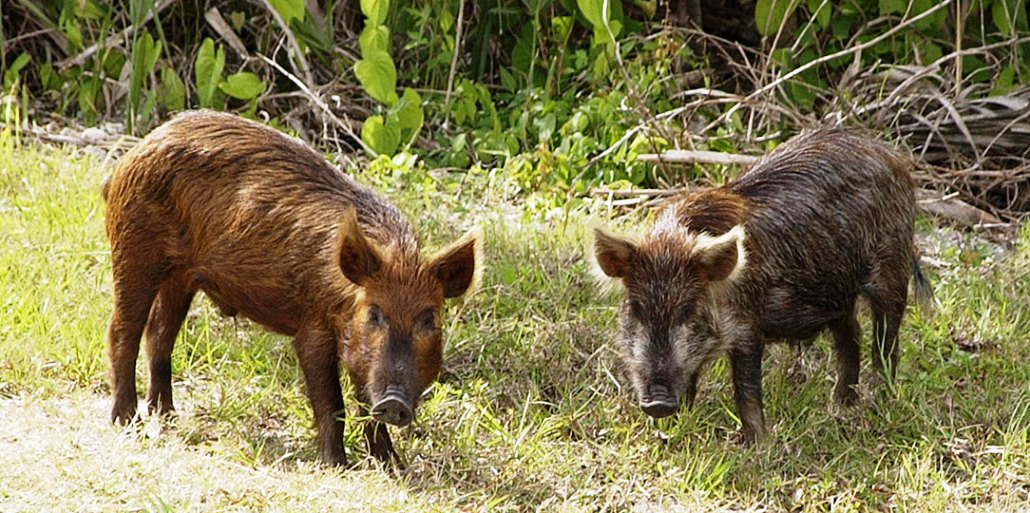The island of Guam is well known for the devastating effects of invasive species on island ecosystems: the extirpation of most of the forest dwelling birds due to the human-introduced brown tree snake being the worst.
The loss of native birds has resulted in a loss of forest seed dispersers. Recent research conducted by lead author Ann Marie Gawel, based on her University of Guam master’s thesis, has found an unlikely forest ally, feral pigs.
With the loss of birds in the limestone forests on Guam, seed dispersal for native plants has become problematic. The damage caused by ungulates, introduced deer and pigs, has been documented in tropical forests worldwide. Less documented is the effect of these animals on seed dispersal of native and nonnative forest plant species.
“The browsing preferences of ungulates on the island of Guam have directly impacted the diversity and make up of forest species for many years. Our research indicates the need for ungulate control that addresses the ecological role that pigs have been providing to limestone forests since the loss of native seed dispersers,” notes Gawel.
Photo of feral pigs courtesy of NASA (National Aeronautics and Space Administration).

